Review: Google Nexus 4
Dec 7, 2012, 4:55 PM by Eric M. Zeman
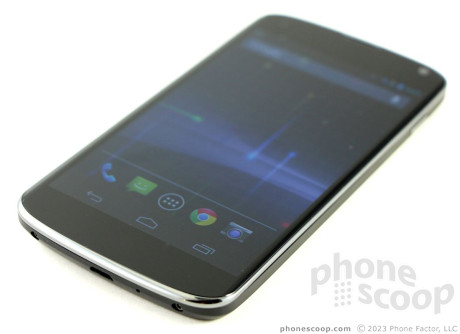
The Nexus 4 is the fourth-generation pure Android smartphone from Google. It is built by LG, and works on AT&T and T-Mobile USA's networks. Unfortunately, the great Jelly Bean operating system outshines the hardware from LG.
Form
Is It Your Type
The Nexus 4 is for Android purists. It is one of the few devices to run a stock, unaltered version of Android and will be among the first to receive new system updates and features from Google. Like other Nexus devices before it, the Nexus 4 is a class-leading device with a few notable exceptions.
Body
The Nexus 4 (N4) is based on LG's Optimus G, which was released earlier this year and is sold by AT&T and Sprint. There are subtle and important differences in the hardware, though, that make the N4 a unique device.
It has the unmistakable shape of a Nexus device. Where the Optimus G is rectangular and blocky, the N4 has gentle curves forming the bottom and top edges that give it a pleasing look. From several feet away, it could almost be confused with last year's Galaxy Nexus, which was made by Samsung. The N4 is a black slab with glass on the front and a glass-like material on the back. It's glossy and highly reflective. It's a little on the conservative side, but in a good way.
The N4's glass front is rounded off at the edges and merges seamlessly with the plastic material that encircles the phone. The edges taper away from the front surface to the back, reducing the footprint in your palm just a little bit. The Nexus 4 feels great to hold and use. It's comfortable, and easily slips in and out of pockets. It's noticeably better than the Optimus G when it comes to feel.
The glass is what I like about the N4 the most — and the least. The display (naturally) and the back panel are glass (or something glass-like.) The back panel has a pattern under the surface that can be seen when you tilt it in direct light. It has a cool effect that I like. Also, glass is better than plastic in my book. One thing I have historically disliked about so many of LG's smartphones are the cheap materials. The N4 is different. The glass really ramps up the feeling of quality.
But that back panel is easily breakable. The N4 dropped two feet from my car door to my driveway and the back panel cracked along the bottom edge. Yeah, I'm pretty mad about it.
The volume toggle, which is on the left edge, is certainly a cinch to find, but travel and feedback is somewhat mushy. The lock button, on the right edge, is much better. It's easy to find and has excellent travel and feedback. The headphone jack is on top and the micro-USB port is on the bottom. There is no dedicated camera button. There are also two exposed screws on the bottom, holding the entire assembly together.
The N4 uses a micro-SIM card that sits in a little tray. The SIM card can be accessed with the help of a paperclip. The N4 does not have a removable battery; it's sealed inside. It also does not have an accessible memory card. The Nexus 4 ships with either 8GB or 16GB of internal storage, and that's all you get.
The N4 feels worlds better to me than 2011's Galaxy Nexus. It is a comfortable piece of hardware to hold and use, but the breakable back panel really sours my overall feelings for the materials chosen by LG.
Performance
Screen
The N4's display is fantastic. It measures 4.7 inches across the diagonal and packs an impressive 1280 x 768 pixels. You can't see the individual pixels, even when you hold the phone up close to your eyes. The display is an LCD panel with LG's in-plane switching technology. It's simply one of the best displays I've seen on an LG device. It is crisp, sharp, bright, colorful, and it's perfectly usable outside.
Signal
The N4 is sold directly by Google unlocked and without a carrier contract. It is also sold by T-Mobile with a contract. The unlocked version is a GSM-based device and will run on AT&T and T-Mobile's 3G/4G networks. It does not support LTE at all and is limited to HSPA+ at 42Mbps. I was able to test the Nexus 4 on both T-Mobile and AT&T's HSPA+ networks and didn't have any trouble with it. The device always maintained a solid connection to both networks. Data speeds, however, were an issue. Using a handful of different speeds tests, the N4 never exceeded 6 Mbps, even in areas with known 42 Mbps coverage. Other devices tested in the same area attained dramatically higher speeds on both AT&T and T-Mobile's HSPA+ networks. When it came time to making phone calls, though, the N4 always connected them on the first attempt and never dropped any calls.
Sound
The N4 is a good voice phone. The earpiece is plenty loud and the quality was good on both AT&T and T-Mobile's networks. I didn't noticed any difference in the sound quality. Both networks provided clear, noise-free conversations that were easy to hear. The speakerphone could be a little bit louder, but still get's the job done. The quality is good, too. The ringers and alerts always managed to get my attention, but the vibrate alert is weak.
Battery
In a word, crummy. Battery life is the N4's Achilles Heel. In several weeks' use, it never lasted more than 12 hours, even when used sparingly. Several times, it died after just 8 hours. This device has a 2100 mAh battery on board. It should be able to get through an entire day, but it doesn't. Battery life is markedly worse than either the AT&T or Sprint Optimus G. You really have to pay attention to the battery on the N4 and always have a charger handy. The battery life is depressingly bad. And since the battery isn't removable, forget about carrying a spare to get you through the day.
Basics
Menus
The Nexus 4 runs stock Android 4.2 Jelly Bean, the latest version from Google. We've reviewed the entire platform in depth here.
To quickly sum up what we said in the full review, Android 4.2 is an excellent update. It adds lock screen widgets, which let you peek at your SMS or Gmail inbox without unlocking the phone. It also adds new notification shade controls that let you access the wireless controls more directly.
There are plenty of home screen panels for user customization, the main menu app menu can be arranged at will, and the ability to apps in folders on the home screens lets you organize the device how you like.
Performance of the Nexus 4's software is incredibly fast. The phone has a quad-core Snapdragon Pro processor on board, and this engine gets the N4 revved up.
Calls and Contacts
The phone application has been revised a bit, but not significantly. Pressing the phone button on the home screen brings you to the dialpad. You can swipe sideways to access the call log, and your favorite contacts. The call log provides some information about calls (time, duration) in addition to shortcuts for redialing or sending a text message to that number.
Contacts are automatically synced with your Google accounts and whatever other contact databases you might wish. Contact cards, or direct dial or direct message shortcuts can be placed on the home screens, which give you instant access to your besties. You can also add contacts to your Favorites list — which is visible in the phone application and includes a homescreen widget.
Messaging
The N4 comes with the same stock Android communications apps that are on every other Android devices. That means Gmail, email, SMS, Google Talk, Google+, and Google+ messenger. There are no third-party communication tools on the phone when you pull it out of the box, Google is all you get. If you want more, the Google Play Store has plenty to wade through.
The stock tools work well.
One big change that will impact your messaging on the N4 is the new traceable keyboard. It works just like Swype or SwiftKey, but is Google's version thereof. I found it to work well.
Extras
Media
The Google Play Store is your one-stop-shop for music, movies, TV shows, books, and magazines. It addition to the Store itself, the N4 comes with all the ancillary apps that are used to interact with each type of content (Play Music, Play Movies, etc.). There are no other installed music or video services, but obviously the app store has plenty from which to pick.
Camera
The biggest changes to the camera software are the new menu controls and the Photo Sphere tool, both of which we discussed in depth in our full Android 4.2 Jelly Bean review. What you need to know about the N4's camera is that it's really fast and comes with a decent set of features, but not as many as might come on a device with OEM software on board.
Photos
The N4 has an 8-megapixel camera. It's much better than the 5-megapixel shooter on the Galaxy Nexus, but not as good as the One X+, iPhone 5, or Galaxy S III. It does best when outside in bright sunlight and suffers when indoors or working with low light (the flash really helps; be sure to turn it on.) Focus was the biggest problem I had with the N4. Many of the images were too soft. Exposure was typically OK, but white balance was uneven. Add these together and you get excellent results some of the time, OK results most of the time, and extremely not-OK results too often for me.
You can see a sample Photo Sphere shot right here.
Video
The video performance was a little bit better. Focus was more consistently accurate, as was white balance. I was pleased with the majority of the results I got.
Gallery
The gallery app is essentially carried over from Android 4.0 and 4.1. Aside from the ability to view the Photo Sphere images, it doesn't do anything new or different. It's better at sharing and editing photos than it is at managing all your online albums, but you do have some control over which photos are where.
Bluetooth
The N4's Bluetooth radio worked perfectly. I was able to connect with an array of other gadgets and pass phone calls and music to mono and stereo headphones. Calls sounded good through my favorite headset, but the volume was a bit low (even though both phone and headset were turned all the way up). The same was true of music.
Browser
The N4 includes Google's Chrome browser and not the older, generic Android browser. I find Chrome to be the best choice for Android handsets, but there are plenty of alternatives in the Google Play Store. It worked perfectly at rendering web sites over both AT&T and T-Mobile's networks. Web sites were quick to load no matter what sort of connection was available, despite the N4's slower data speeds.
Clock
The N4 has a fairly big and easily-read white digital clock on the lockscreen. One of the new features in Android 4.2 is called DayDream. It is essentially a live wallpaper that's only used with the device is plugged in. One of the wallpapers is the clock. So, if you want, you can set the N4 to always show the big clock - which floats around the home screen - when the device is docked or charging.
GPS
The N4's GPS radio worked just fine. Google Maps is the only navigation service in board and it worked like a charm. Together with Maps, the GPS radio pinpointed me to within about 15 feet in 5 to 10 seconds. It was very quick. Google maps is a great tool for plotting directions or searching for local points of interest.
NFC
The N4 includes NFC (near-field communications). Google ostensibly believes that people will use the NFC with its Google Wallet app to make mobile payments. However, it can also be used with NFC tags to change settings and perform other actions. The N4 doesn't come with any NFC tags, but you can pick them up at carrier stores or electronics retailers. You can also use NFC radio to share content, such as photos, between two Android devices. I tested this feature and it worked perfectly. You can choose to turn the NFC radio on and off, which is nice.
Wireless Charging
The N4 supports wireless charging. You have to go out and buy a charging pad yourself ($30 - $50), plug the pad in and put it somewhere you like to drop your phone. Place the Nexus 4 on the pad and it will charge without needing to be plugged in. I was able to test this feature and found it worked well, but charging was slow.
Wrap-Up
I have really mixed feelings about the Nexus 4. I like the clean and quick Android 4.2 operating system of the Nexus 4 more than I like the hardware itself. Here's why.
The Nexus 4's display is great, the voice performance good, and the extra features - such as NFC - are cool. The bad battery life and so-so camera are really a drag, though. It's an attractive phone, thanks to the glass sandwich design, but it is also fragile, which I unfortunately learned the hard way. Also, the Nexus 4 is stuck on HSPA+ and not LTE. Data speeds on the Nexus 4 were definitely slower when compared to LTE 4G-equipped devices.
Android 4.2 is awesome, though. I love how clean it is, how free of carrier and manufacturer bloatware, and how flexible and customizable it is. The operating system and applications outperform the hardware by a mile.
In the end, I can't recommend the Nexus 4 as a primary device due to the battery life alone. Eight to 12 hours is just not enough. If you want to always have the latest version of Android on hand, then the Nexus 4 makes a great second phone (especially since it costs only $299). If having the current Nexus-branded smartphone is really important to you, I'd simply suggest that you also invest in a portable power pack of some sort, because you're going to need it.
Comments
Big shock, another crummy LG.
Globhead said:
I was not thrilled when I first heard that Google picked LG. Maybe they will go back to Samsung next year.
Agreed. I don't care how pretty the phone looks. It's still LG. I am hoping those rumors of ...
(continues)
I like the hardware and it was a good replacement for my old HTC Desire HD (inspire 4G on the US).
The camera is bad though. It works nicely when you have enough light, bad lighting render the camera useless...
(continues)
To the people who wondered how the Unlocked iPhone 5 Justified the price premium
I'm shocked battery life is that bad considering this thing lacks LTE.
BIG SURPRISE! LG (another EPIC Disappointment)
Not to mention, LG's Corporate culture is kind of jerky and arrogant without any real reason to support it. If I was a public corporate figure for LG, I would be humble and listen to my customers (like Apple in their early years).
For example, they (LG Executives) regularly frequent a small country club here in Central Florida.They are arrogant and aloof. To the point where other member's level of service suffer when they are in town. It's gotten to the point that even though I have had a membership there for years I will pay to...
(continues)


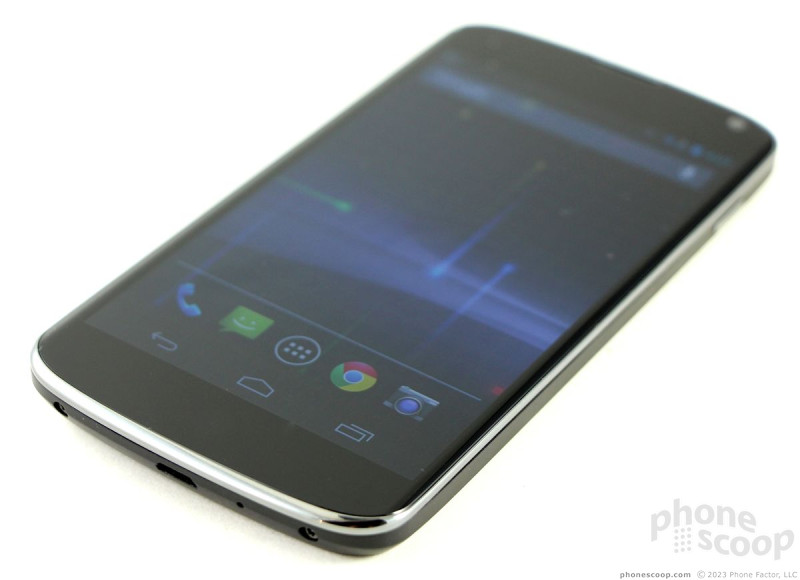



































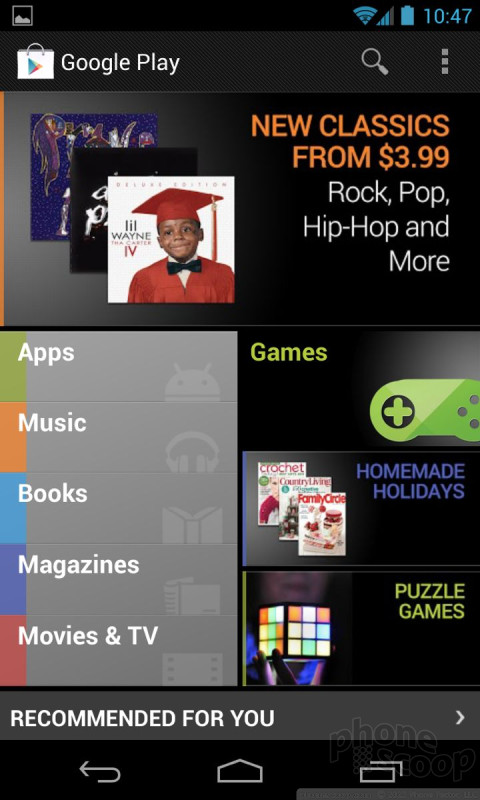





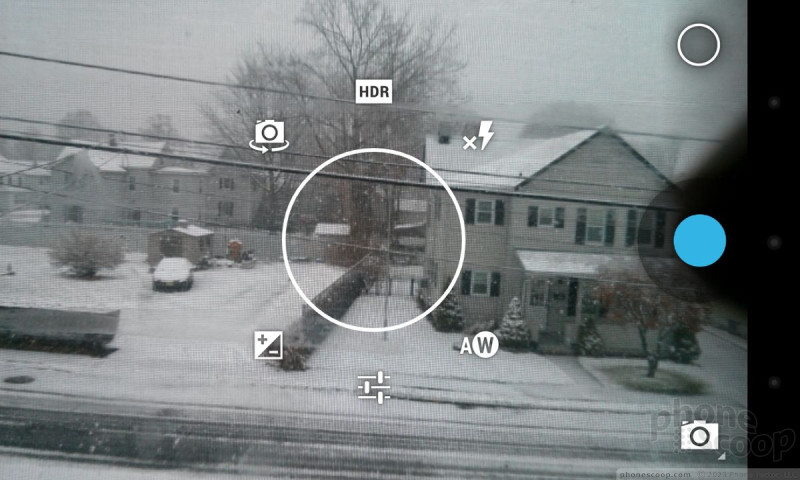




















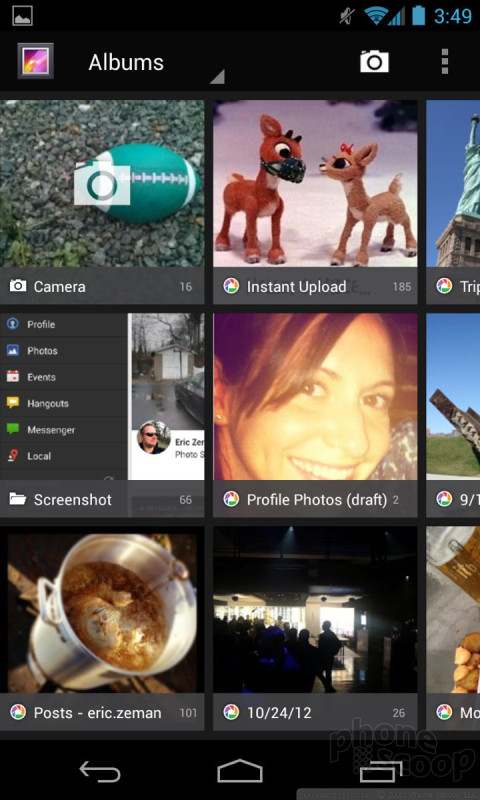






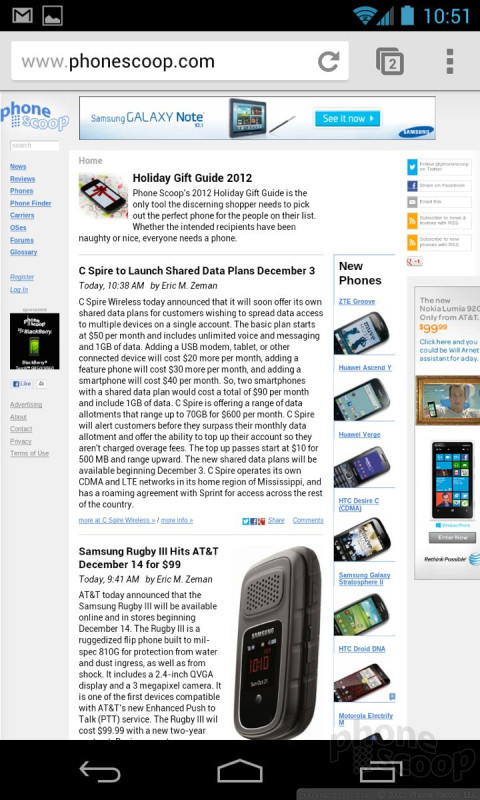



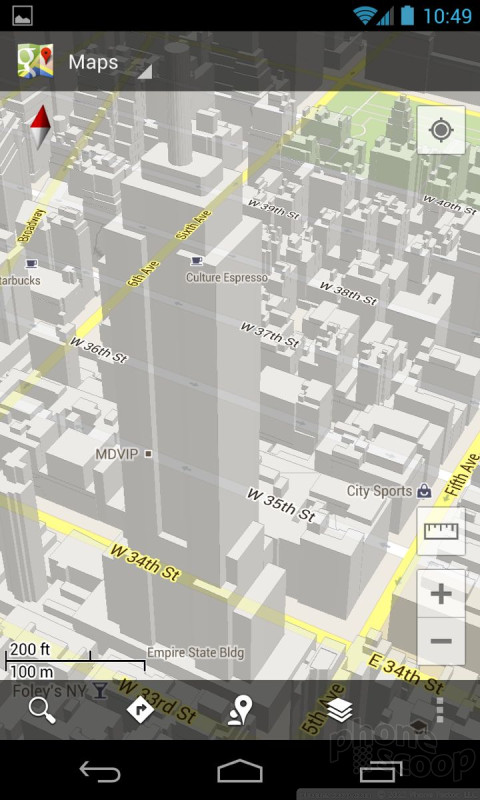



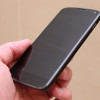 Hands-On: Google Nexus 4
Hands-On: Google Nexus 4
 Android 4.2 Jelly Beans Adds New Features
Android 4.2 Jelly Beans Adds New Features
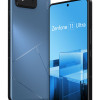 Asus Goes Big with Zenfone 11 Ultra
Asus Goes Big with Zenfone 11 Ultra
 LG Nexus 4
LG Nexus 4






